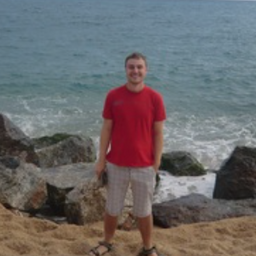The acceptance and belonging of industrial heritage and tourism in Central and Eastern Europe II
My Session Status
According to Rodney Harrison, “in the spirit of greater cross-disciplinary engagement, there is […] a pressing need to pay more attention to non-anglophone (and, indeed, non-Western) heritage literatures, histories and traditions” (2013: xiii), when we deal with critical approaches to heritage. This need is even greater when the scientific research focuses on countries such as Romania, Czechia, Bulgaria or Poland where Industrial Heritage, for example, is ignored and where the mechanism and policies of categorization, safeguarding, and management are lacking. There are several reasons for this: 1) the association of industrial sites with totalitarian regimes that formed this European region during almost half of the 20th century, 2) a decrease in prestige and social status of working-class and industrial towns after the fall of the political regimes in the1990s, 3) the monopoly held by the “noble” heritages that still shape the local discourses, the heritage practices and policies, and
4) the conflict between environmental issues and heritage assessment. However, regardless of the path we take in this part of Europe, we realize how much landscapes, practices, identities and everyday life have been fashioned and continue to be fashioned by the industrial era. The industrial heritage is exploited as a tourism resource in western countries, in both urban and rural areas, either through interpretive tours of preserved sites, or by restoring the existing ruins for a new type of tourism experience such as creative tourism. According to Xie (2006), industrial heritage tourism is becoming a socioeconomic phenomenon. The situation is slightly different in Central and Eastern (CE) Europe, where only in recent decades have industrial sites become of interest to artist communities or tourism organizations.
The main purpose of this session is to present and examine the different meanings of industrial heritage in Central and Eastern Europe in the light of changing cultural practices, policies and preservation and to what extent it is used for the rejuvenation of communities through tourism or other activities. How is and how was Industrial Heritage perceived in this European region? How do neighborhoods and heritage communities connect with Industrial Heritage when the working-class identity is being radically redefined? What are the specific challenges of Industrial Heritage knowledge and policies in CE Europe? What are the best methods and practices to employ beyond merely preservation in order to create or reinforce individual, and community interest in modern towns, as well as industrial buildings and landscapes? Does industrial tourism contribute in the CE Europe to the ”cultural enrichment and rejuvenation” of some destinations as Forga and Valiente (2015) have suggested?
We will look to various disciplines including ethnology, tourism studies, memory studies, museology, architecture, urban studies, sociology, and cultural management to answer these questions. This session is a way to find a path towards theoretical and practical knowledge of Industrial Heritage at the margins, and to challenge and enrich the field of Heritage studies which has been developed primarily by Central and Western experts and institutions.
This session was originally proposed by Daniela Moisa and Carmen Chasovschi
Sub Sessions
Mining can be considered as one of the key human activities that affects the development of many regions, conditions the economic development of countries, but also affects the ways of life of people in mining areas. Mining of minerals also significantly transforms the landscape and leaves behind a number of remains, which can be used even after the end of mining activities. These remains can be processed and perceived as a mining heritage, which refers to mining past. The mining heritage is ...
This paper explores the Workers’ holiday resorts (Croat. Radnička odmarališta) in ex-Yugoslavia designed by the communist government from 1945 onwards to fulfill the country’s ideology of an emerging socialist society. The Workers’ holiday resorts were retreat hotels for workers, mostly visited in summer and situated on the Croatian Adriatic coast. After World War II, Yugoslavia began accelerating plans for rebuilding and restructuring, first and foremost through the industrialization and mo...



Discussion